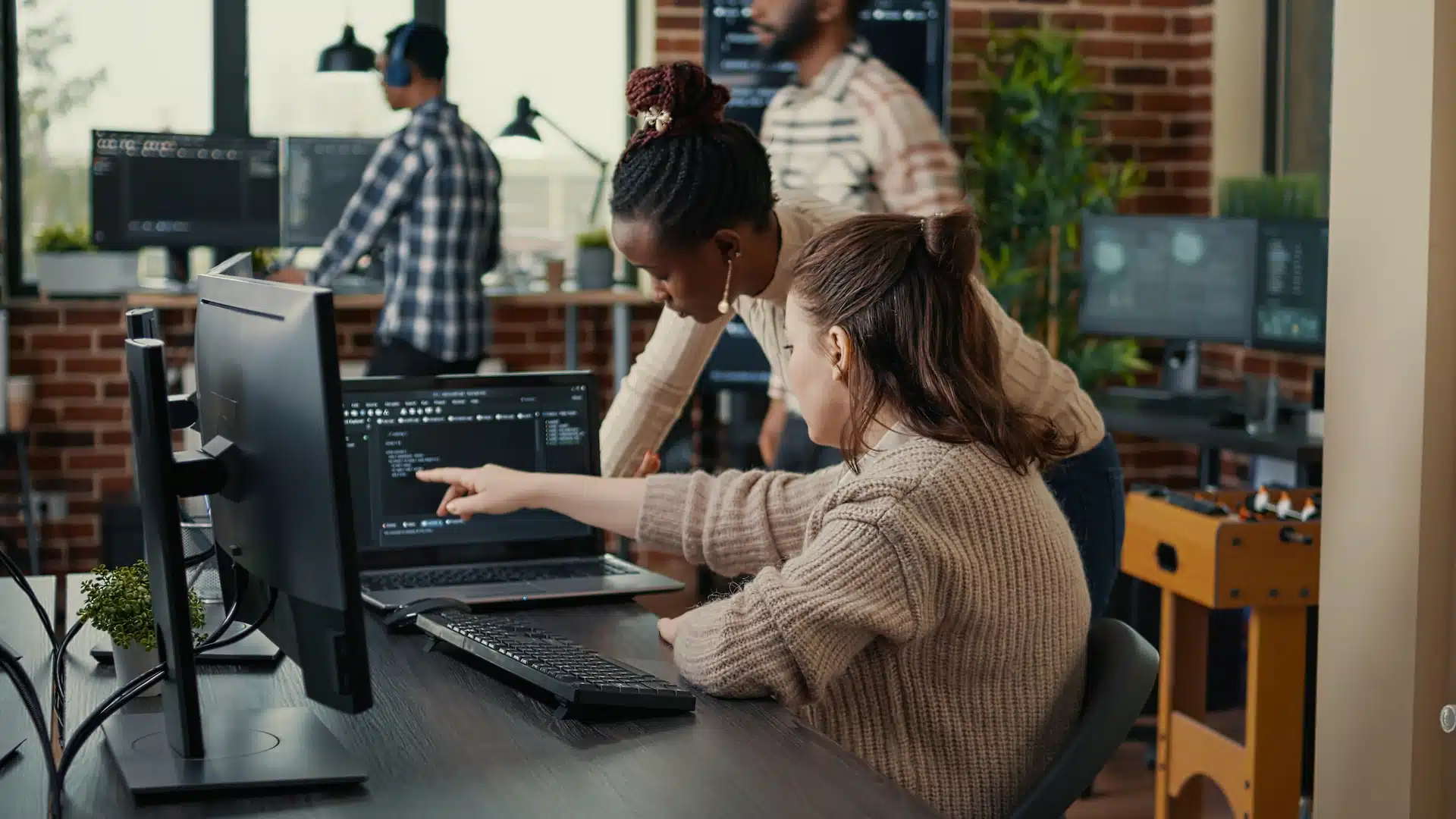Web Design Vs Web Development: Understanding The Differences And Importance




Understanding the roles of web design and web development is essential for businesses aiming to establish a functional and visually appealing online presence. While these terms are often confused, they represent two distinct processes that work together to create a website that engages users and drives results. Web design focuses on visual aesthetics, user interface (UI), and the overall user experience (UX), while web development translates these designs into functional code using tools like HTML, CSS, and JavaScript.
This article breaks down the specific roles, key tools, and the relationship between web design and development, along with their importance in delivering an engaging, optimized website.
Web design focuses on creating a website’s visual layout, typography, color scheme, and interactive elements to ensure it is both visually appealing and user-friendly. Designers aim to build a seamless user experience (UX) by organizing content, enhancing brand identity, and guiding user interactions.
Color Scheme: Colors impact brand consistency, user perception, and emotional response. Blue often signifies trust, while red conveys urgency. A carefully curated color palette enhances user engagement and supports branding goals.
User Interface (UI): UI refers to interactive components like buttons, menus, icons, and navigation bars. These elements are designed to be intuitive, reducing cognitive load and encouraging smooth user navigation.
Layout: Layout determines how elements are structured on the page. Grid-based systems ensure content flows logically, while asymmetrical layouts can add creativity and visual interest. The layout establishes a clear visual hierarchy, guiding users toward essential elements such as calls-to-action (CTAs).
Typography: Fonts, spacing, and alignment influence content retention and readability. Designers balance aesthetics with usability, ensuring that headlines, subheadings, and body text are organized to communicate information.
Imagery and Visual Content: Images, videos, and icons complement the text and engage users. Designers select visuals that align with the website’s theme while optimizing them for loading speed and clarity.
Web designers use tools like Adobe Photoshop, Illustrator, Figma, and Sketch to create wireframes and prototypes. Prototypes help bridge the design handoff process by providing developers with a visual reference for coding. A critical aspect of web design is responsive design, ensuring that layouts adapt seamlessly to various devices, including desktops, tablets, and smartphones.
Web development focuses on converting design concepts into functional code. It involves creating the website’s technical infrastructure and ensuring seamless operation and integration of front-end and back-end systems.
Front-end development involves building the parts of a website that users interact with directly. Developers use HTML, CSS, and JavaScript to create visually aligned, responsive, and interactive user interfaces.
HTML: Structures website content like text, headings, and images.
CSS: Styles content by managing layout, colors, and fonts.
JavaScript: Adds interactive elements like animations, dropdowns, and real-time content updates.
Developers also use frameworks like React and Vue.js to streamline front-end development, ensuring smooth navigation and fast loading speeds across all devices.
Back-end development focuses on server-side processes, data management, and system integration APIs. It powers the website’s functionality, allowing dynamic features like user authentication, data storage, and payment processing.
Databases: Platforms like MySQL and MongoDB store and organize website data securely.
APIs: Allow communication between the website and third-party services, such as payment gateways or CRM tools.
Server-Side Scripting: Languages like Python and PHP process requests, retrieve data, and send dynamic content to the user.
Back-end developers ensure the website runs efficiently, remains secure, and scales to accommodate growth.
Full-stack developers manage front-end and back-end tasks, providing comprehensive solutions that integrate functionality and design. Full-stack expertise is particularly valuable for businesses requiring streamlined workflows and customized features.
While web design and development aim to create a successful website, their focus, tools, and skill sets differ.
Purpose: Web design emphasizes aesthetics and usability, while web development focuses on technical functionality.
Tools: Designers use software like Figma, Adobe Photoshop, and prototyping tools. Developers rely on programming languages such as HTML, CSS, JavaScript, and back-end frameworks like Node.js.
Skill Sets: Designers need expertise in color psychology, visual hierarchy, and layout optimization. Developers require coding skills, database management knowledge, and experience with system integration APIs.
Outputs: Designers produce wireframes and mockups, while developers write code to bring these designs to life.
A successful website requires seamless collaboration between designers and developers. Designers focus on creating a visually engaging experience, while developers ensure the website is functional, secure, and optimized.
Design Handoff: Designers create prototypes that developers use as a reference for coding. Tools like Figma and Sketch facilitate smooth communication, minimizing errors during development.
Responsive Design: Designers ensure layouts adapt across devices. Developers optimize code to implement these designs effectively.
Performance Optimization: Designers focus on visuals, while developers optimize these assets for loading speed, ensuring high performance without sacrificing quality.
For example, a designer might choose specific typography to enhance readability and align with branding, while a developer ensures the fonts load quickly and display correctly on all screen sizes. Similarly, a designer may create a visually appealing navigation layout, and a developer writes the code to ensure it functions seamlessly.
Effective collaboration ensures that the final product balances aesthetic appeal with technical functionality, creating a website that engages users and performs efficiently.
Web design and web development are equally critical for creating successful websites. While web design attracts and engages users visually, web development ensures the site functions as intended.
Businesses that neglect either web design or development risk creating websites that look good but perform poorly or function well but fail to engage users. A balance of design and development ensures a platform that not only attracts visitors but converts them into customers.
Determining whether to focus on web design, development, or both depends on your business goals, website requirements, and your web design budget.
For Visual Branding: Prioritize web designers who specialize in UI/UX principles and brand consistency.
For Technical Functionality: Work with experienced developers skilled in front-end frameworks, databases, and server-side scripting.
For Comprehensive Projects: Hire full-stack developers who combine design understanding with coding expertise.
Selecting the right web design team ensures your website achieves both aesthetic excellence and technical efficiency, delivering an exceptional experience for users and measurable results for your business.
Web design and web development are two interconnected but distinct components of creating a website. Web design focuses on visual appeal, usability, and user experience, while web development involves building the technical functionality that powers the site.
Successful websites require collaboration between designers and developers to ensure responsive design, performance optimization, and seamless functionality. By understanding the roles, tools, and processes involved, businesses can make informed decisions that align with their goals and provide users with a visually engaging, functional platform. Balancing web design and web development ensures a website that not only attracts visitors but also delivers measurable value.